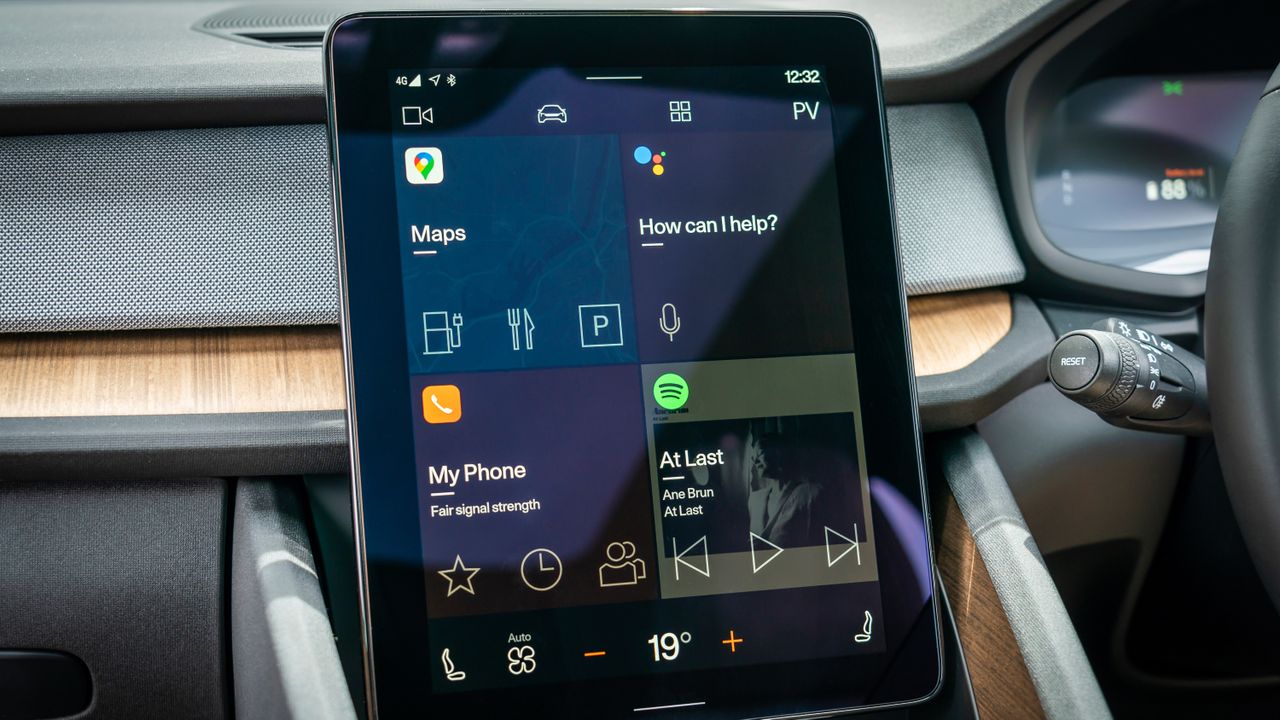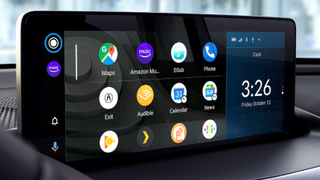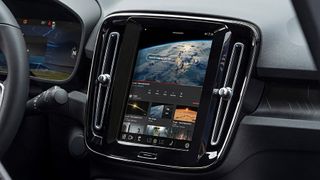AutoAndroid Auto is best when it comes to in-car entertainment, other’s need to improve quickQuit while you’re behind: Car manufacturers, please stop making your own infotainmentWhen you purchase through links on our site, we may earn an affiliate commission.Here’s how it works.
AutoAndroid Auto is best when it comes to in-car entertainment, other’s need to improve quickQuit while you’re behind: Car manufacturers, please stop making your own infotainmentWhen you purchase through links on our site, we may earn an affiliate commission.Here’s how it works.
Quit while you’re behind: Car manufacturers, please stop making your own infotainment
When you purchase through links on our site, we may earn an affiliate commission.Here’s how it works.
(Image credit: Polestar)

(Image credit: Polestar)
What do the Bugatti Chiron and Volkswagen Up have in common? One is a £3m hypercar, the other a £14,000 city car with one-twentieth the power. The answer is, that neither of them has a touchscreen, or indeed any display at all on the centre console.
The Bugatti has three rotary dials with small integrated displays for air conditioning and performance information, along with a pair of displays on either side of the massive speedometer. The Volkswagen has a simple display for controlling the radio, above which sits a cradle to hold your smartphone and present your entertainment and navigation apps of choice.
Despite their enormous differences, both the Up and the Chiron are taking the right approach when it comes to car infotainment.
Last year, BMW celebrated 20 years of its iDrive infotainment system. And while this undoubtedly represented cutting-edge technology for the first decade or so of its life, turning cars into computers and bringing satellite navigation to every driver, car technology has failed to keep pace with the phones in our pockets. Today’s iDrive is one of the better systems, in my opinion, but even here I prefer to connect myiPhone, boot upCarPlayand be done with it.
It isn’t just BMW, of course. Today, it’s hard to think of any manufacturer-designed infotainment system that offers a better user experience than what’s possible withAppleCarPlay orAndroid Auto. Many have suffered from feature creep, adding far more functions and options than the average driver could ever want, while implementing gesture controls that rarely work and touch-sensitive buttons that rob too much of the driver’s attention.
(Image credit: Google)

(Image credit: Google)
Fellow car reviewers agree, preferring to connect their smartphone and use Waze orGoogle Mapsthan suffer through the car manufacturer’s own system. This is somewhat awkward on car launches, where the drive route is usually programmed into the car’s own navigation, leaving no option for connecting one’s own phone, which is relegated to the door bin or wireless charger.
Sign up to the T3 newsletter for smarter living straight to your inbox
Get all the latest news, reviews, deals and buying guides on gorgeous tech, home and active products from the T3 experts
Where car manufacturers sit on this is tricky to determine. Some include CarPlay andAndroid Autoas standard on most of their vehicles, others charge a small (or, sometimes significant) fee to add them in, and a handful still soldier on without. Chief among these is Tesla, which is no stranger to forging its own path and shows no sign of offering a smartphone-driven substitute for its own system.
So too when it comes to navigation, where your mapping app of choice is surely going to be easier to follow than the car’s own. Music too, where faced with the option of Bluetooth-streaming from a phone to the car, or tapping at the touchscreen to navigate one’s own Spotify or Apple Music playlists, the answer for most drivers will be obvious.
(Image credit: Google)

(Image credit: Google)
Thankfully, a solution is slowly arriving. Google’sAndroid Automotive(not to be confused with the aforementioned Android Auto) is an infotainment system available in thePolestar 2, Volvo XC40 recharge and a handful of other cars. Here, the car essentially runs a custom Android operating system, complete with Google Maps, Spotify, voice control via the Google Assistant, and the Play store for downloading more apps. It is even possible to connect an iPhone and use CarPlay, which operates within Android Automotive itself.
Before Google and Apple got involved, car technology felt stuck in the same place mobile phones were prior to the arrival of the iPhone in 2007. Where once buying a new phone meant learning a new operating system, entering contact numbers all over again, and likely throwing the old phone’s charger in the bin, today a new phone is simply logged into. With Android Automotive, this approach is finally coming to the car market too, and long may it continue.

Vollebak pushes the limits of outerwear with Double Graphene Puffer and Shielding SuitThe company continues to weave innovation into every thread
The company continues to weave innovation into every thread

Bowers & Wilkins Pi6 review: sensational sound, ordinary ANCBowers & Wilkins' step-down true wireless earbuds sound amazing and are well-priced – so what’s the catch, if anything?
Bowers & Wilkins' step-down true wireless earbuds sound amazing and are well-priced – so what’s the catch, if anything?